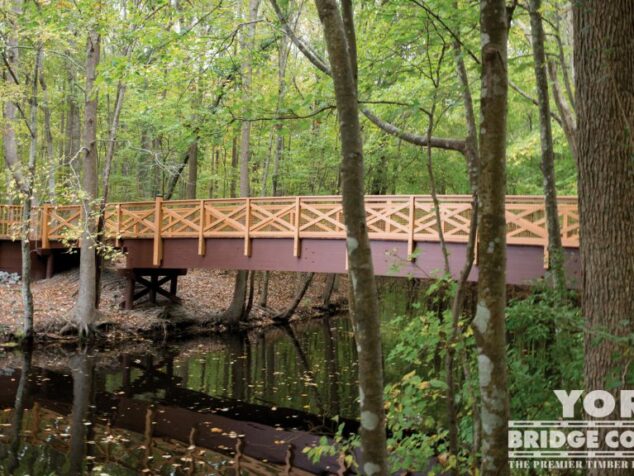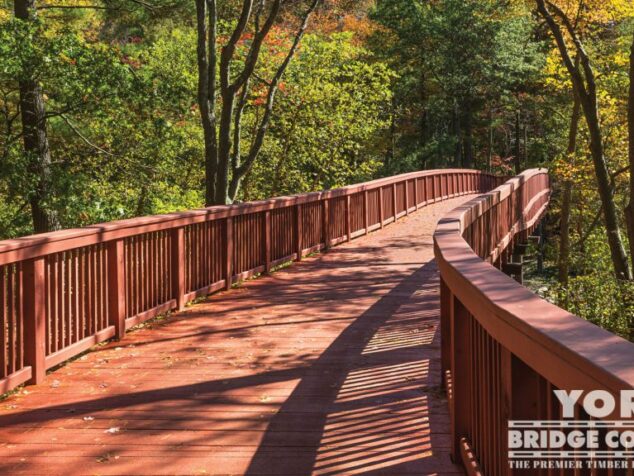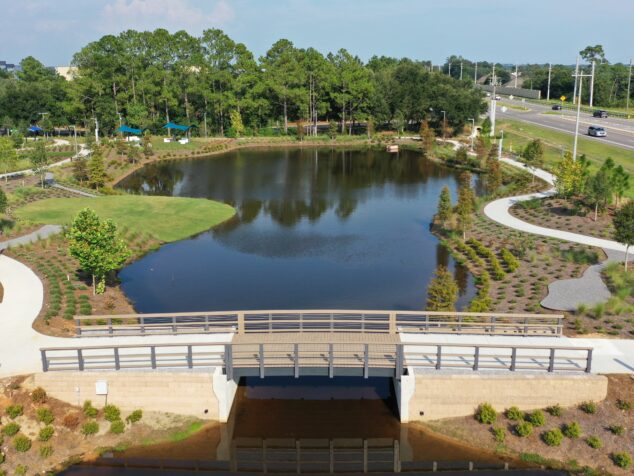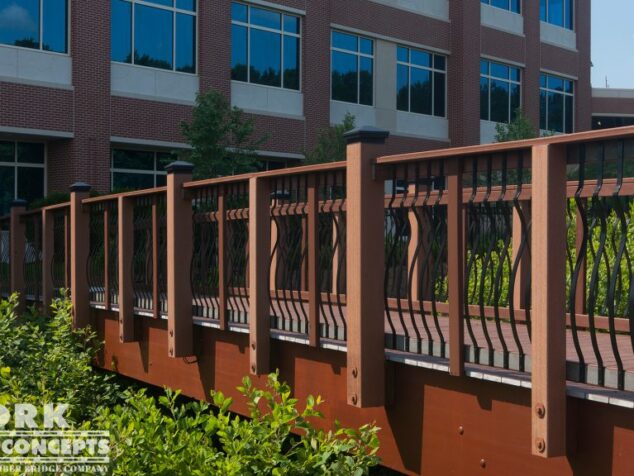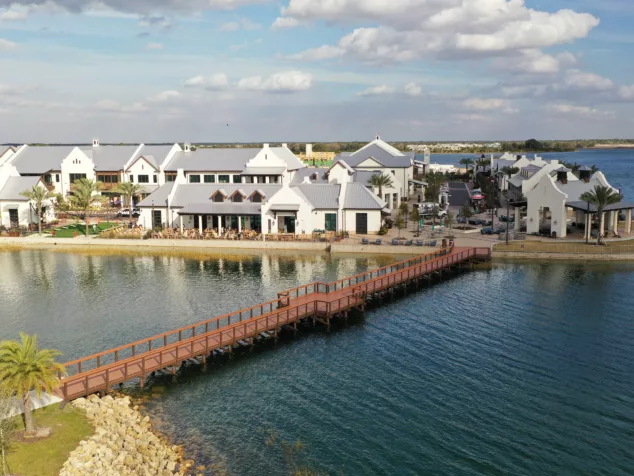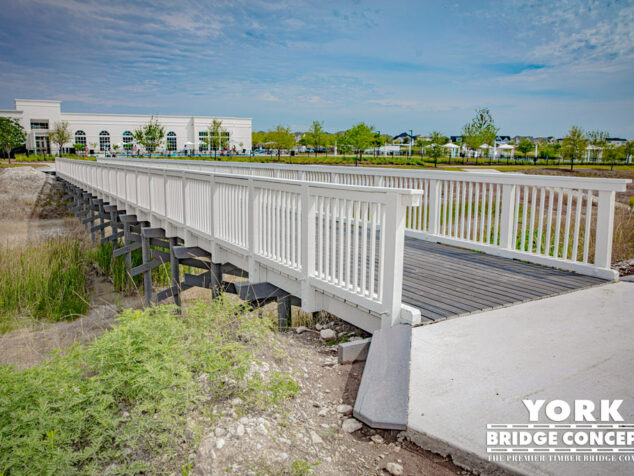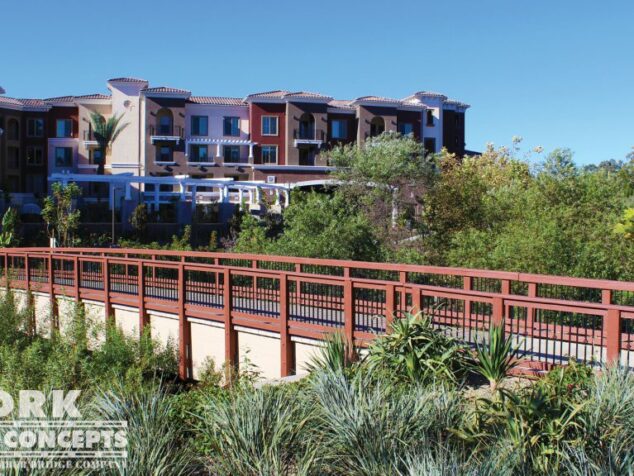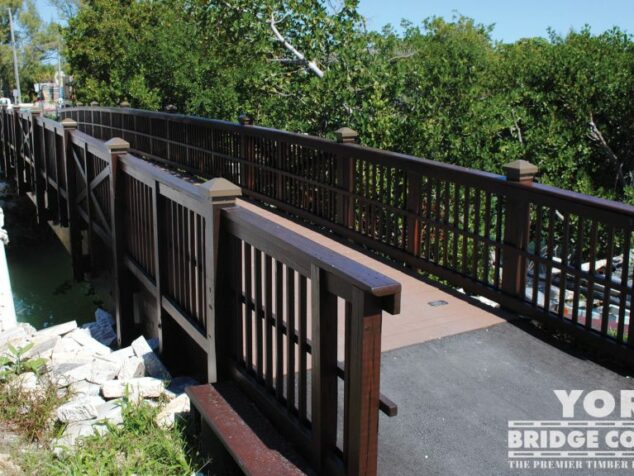Pedestrian Bridge Gallery
Boardwalks | Overpasses | Plazas | Covered Walkways




An Introduction To Timber Bridges
Timber pedestrian bridges offer a unique blend of aesthetics and functionality, enhancing natural landscapes with their organic design. Unlike steel or concrete, timber bridges integrate seamlessly into parks, nature reserves, and urban spaces, offering an eco-friendly solution that celebrates the warmth and character of wood. For centuries, timber has been a reliable building material due to its renewable nature and its ability to be crafted into various shapes, allowing for both rustic and modern designs. Timber bridges, particularly pedestrian ones, serve as more than mere infrastructure—they represent architectural art that complements the surrounding environment.
Modern engineering has revolutionized the way timber is used, allowing for structures that are not only beautiful but also durable and sustainable. Pedestrian timber bridges are often favored for public spaces, as they create a sense of connectivity while maintaining environmental harmony. Whether spanning small creeks or larger rivers, timber bridges help tie communities to their landscapes. By choosing timber for pedestrian bridges, designers and municipalities make a conscious decision to support eco-friendly, renewable materials that provide long-lasting beauty and utility.
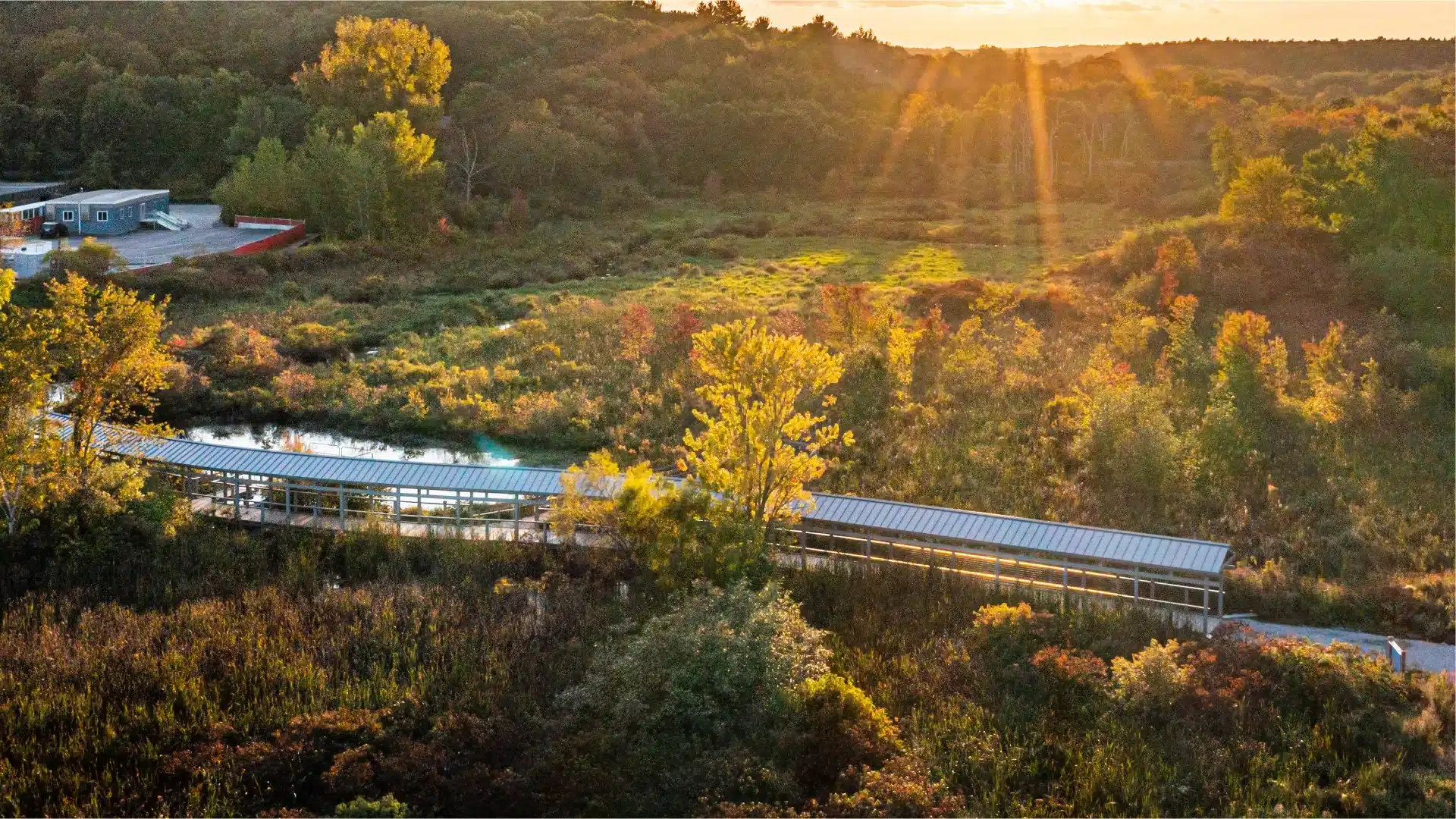
The Benefits Of Timber-Built Pedestrian Bridges
Timber-built pedestrian bridges are not only visually appealing but also come with numerous benefits that make them a practical and sustainable choice. Below are some of the key advantages that timber pedestrian bridges offer:
Sustainability
One of the most compelling reasons for choosing timber for pedestrian bridges is sustainability. Timber is a renewable resource, meaning it can be replenished through responsible forestry practices. Modern timber harvesting ensures that the environmental impact is minimal, with new trees planted to replace the ones that are harvested. Moreover, timber has a lower carbon footprint compared to steel or concrete, as its production and processing consume less energy. In addition to being a sustainable material, timber also sequesters carbon, making it an eco-friendly option for those looking to reduce their environmental impact.
Durability
Contrary to common misconceptions, timber bridges are highly durable when designed and constructed correctly. Advances in wood treatment and construction techniques have improved the lifespan of timber structures, allowing them to withstand various weather conditions, including rain, snow, and extreme temperatures. Timber used in bridge construction is typically pressure-treated with preservatives that make it resistant to rot, decay, and insect infestations. This enhances its structural integrity, ensuring the bridge remains safe and functional for decades.
Aesthetic Appeal
Timber pedestrian bridges have an unmatched aesthetic charm. The natural beauty of wood, with its rich textures and colors, adds warmth and character to any landscape. Timber bridges are often used in natural parks, walking trails, and urban areas to blend seamlessly with their surroundings. Whether left untreated for a weathered, rustic look or stained to highlight the wood's grain, timber bridges can be customized to meet the specific aesthetic requirements of a project. This adaptability makes them a popular choice for projects where appearance is as important as functionality.
Versatility
Timber pedestrian bridges can be tailored to suit a wide range of designs and specifications. From simple, minimalist designs to more intricate and ornate structures, timber offers a high level of versatility in terms of design possibilities. It can be used to create everything from traditional, covered bridges to sleek, modern walkways. Additionally, timber bridges can be constructed in a variety of lengths and spans, making them suitable for both short crossings over small streams and longer spans over rivers or ravines.
Cost-Effectiveness
Timber pedestrian bridges can also be more cost-effective compared to bridges made from other materials. Timber is generally less expensive than steel or concrete, and the construction process is often faster and less labor-intensive. This can lead to significant cost savings, particularly for pedestrian bridges. Additionally, the lower weight of timber can reduce the need for expensive foundation work, further driving down the cost of the project.
Design & Customization of Timber Pedestrian Bridges
Timber pedestrian bridges offer endless possibilities for customization, allowing designers to create structures that not only serve a functional purpose but also become an integral part of the landscape.
Customization Options
One of the most attractive aspects of timber bridges is their ability to be customized to meet specific project needs. Design possibilities are nearly limitless, ranging from traditional to contemporary styles. For example, boardwalks are perfect for marshlands or nature preserves, while covered pedestrian bridges evoke a nostalgic charm, often found in rural areas. Designers can also incorporate unique elements such as curved walkways, decorative railings, and lighting features that enhance both the functionality and beauty of the bridge.
Innovative Features
Incorporating modern technology into the design of timber pedestrian bridges has opened new doors for creativity and innovation. For instance, Computer Numerical Control (CNC) machining allows for precision cutting, enabling intricate detailing that was once difficult to achieve by hand. Structural innovation, such as glulam (glue-laminated timber) beams, adds strength and stability to the bridge, allowing for longer spans and more complex designs.
Timber also works well with other materials like steel or glass, enabling hybrid designs that combine the best qualities of each material. Glass railings, for example, offer unobstructed views of the surrounding scenery, while steel hardware can be used for added durability in high-traffic areas. These hybrid designs enhance the overall functionality of the bridge while maintaining the natural beauty of timber as the primary material.
Visit Our Design Gallery
The YBC Pedestrian Design Gallery has conceptual designs to get the ideas flowing for your next pedestrian timber bridge project.
Showcasing Projects
York Bridge Concepts (YBC) has completed numerous pedestrian bridge projects that showcase the versatility, durability, and beauty of timber. Here are some highlights from their extensive project gallery:
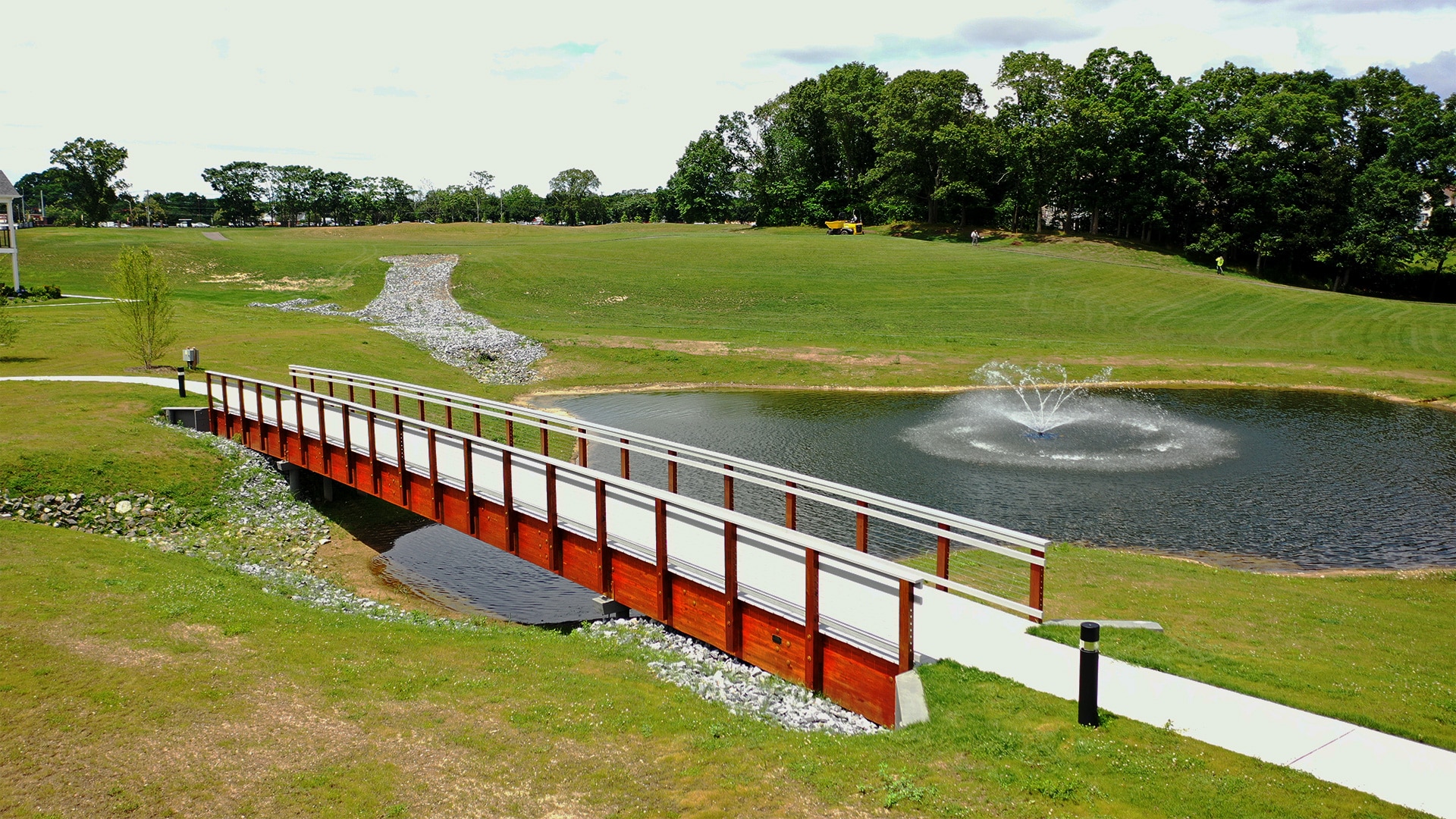
Heatherwood
Multiple Long Span
This project exemplifies how timber can be used to create a multi-span pedestrian bridge that fits seamlessly into the landscape. The long spans of this bridge allow it to cover significant distances without the need for intrusive piers or supports. The design incorporates natural materials and finishes to blend with the surrounding environment, providing an unobtrusive yet functional structure.
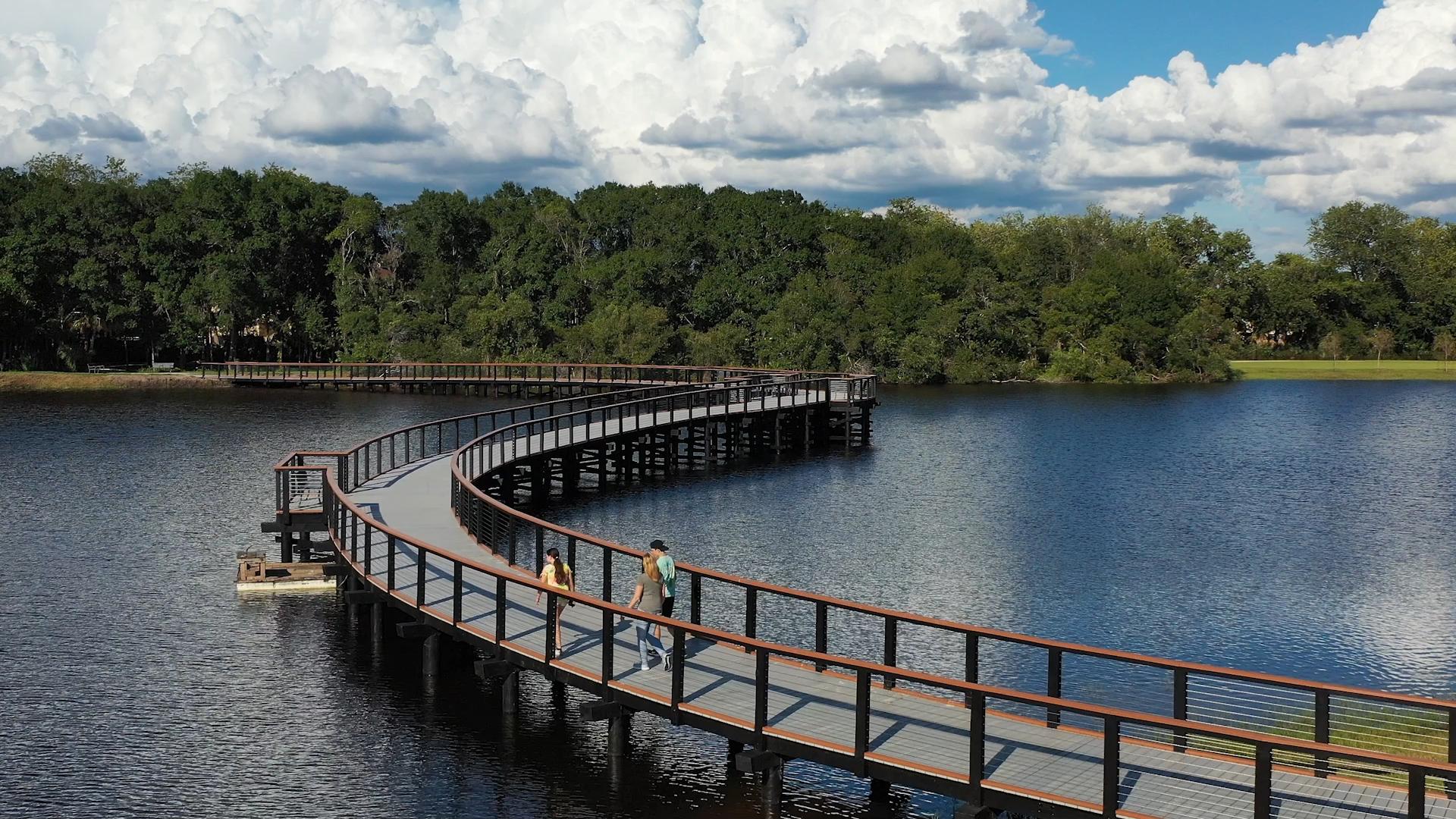
Carrollwood Pedestrian Bridge
Repetitive Span
The Carrollwood Village Park Pedestrian Bridge highlights the aesthetic possibilities of timber construction. With a sleek, modern design that contrasts beautifully with the natural wood grain, this bridge serves both as a functional crossing and a visual centerpiece for the surrounding area. The use of timber allows for a lightweight design that is easy to install, yet sturdy enough to handle high pedestrian traffic.
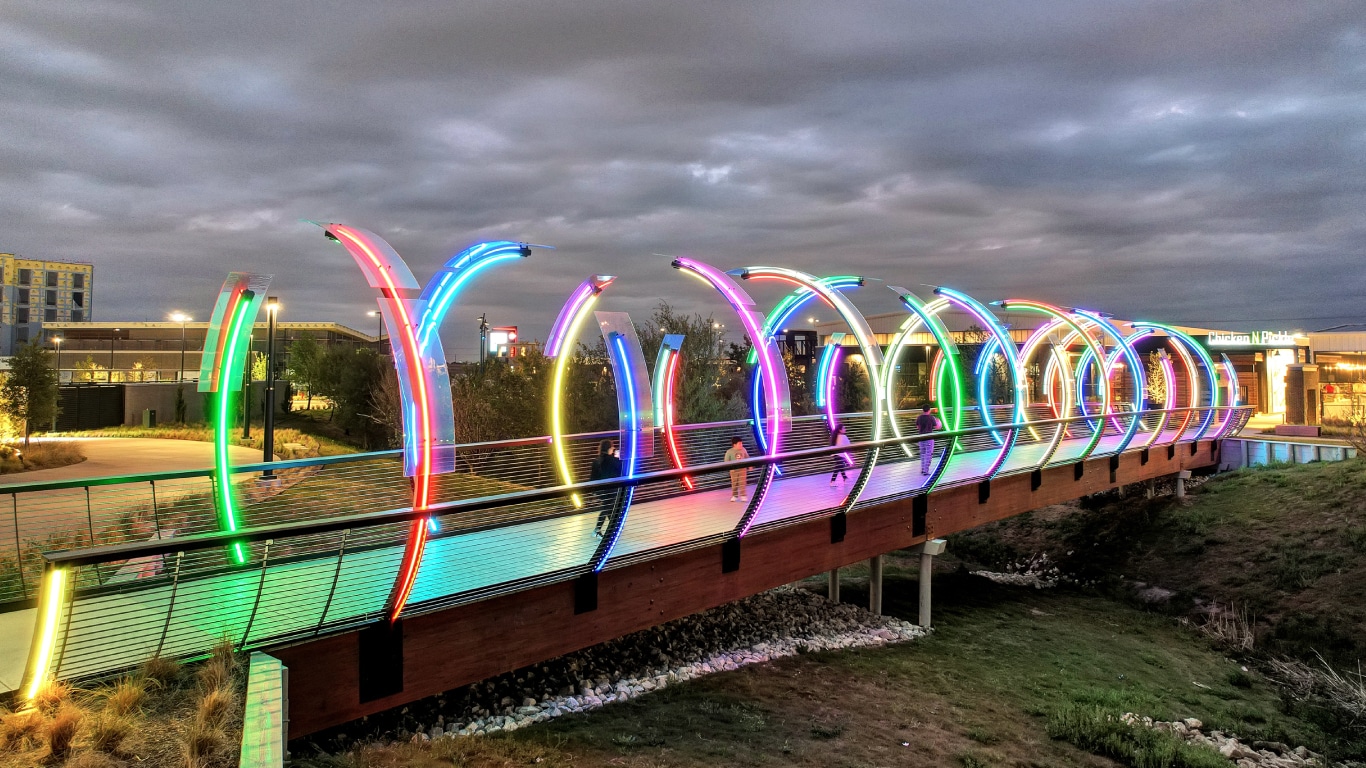
EpicCentral Pedestrian Bridge
Multiple Span
EpicCentral is a project that combines functionality and style. The timber pedestrian bridge here provides easy access across water features while enhancing the overall aesthetic of the park. The design features gentle curves and open railings, allowing visitors to enjoy unobstructed views of the surrounding nature. Timber's natural warmth adds a welcoming feel to the bridge, making it a key component of the park's landscape.
Our Construction Process
Building a timber pedestrian bridge involves a detailed and well-coordinated process to ensure the final structure is both beautiful and durable.
Site Assessments & Permits
Before construction begins, YBC performs thorough site assessments to determine the best location for the bridge. This involves evaluating the landscape, soil conditions, and any environmental regulations that need to be followed. YBC will provide you with all drawings necessary for permits, to assist you with permitting guidelines.
Construction Techniques
YBC uses modern construction techniques that ensure the longevity and stability of each bridge. Timber is carefully treated to resist weathering and decay, and innovative joinery methods are used to create strong, durable connections between the bridge components. Construction is typically fast, minimizing disruption to the surrounding environment with our proprietary Deck-Level Construction. All bridge construction is done on-site to mitigate any unforeseen challenges that would otherwise arise with pre-fabricated solutions.
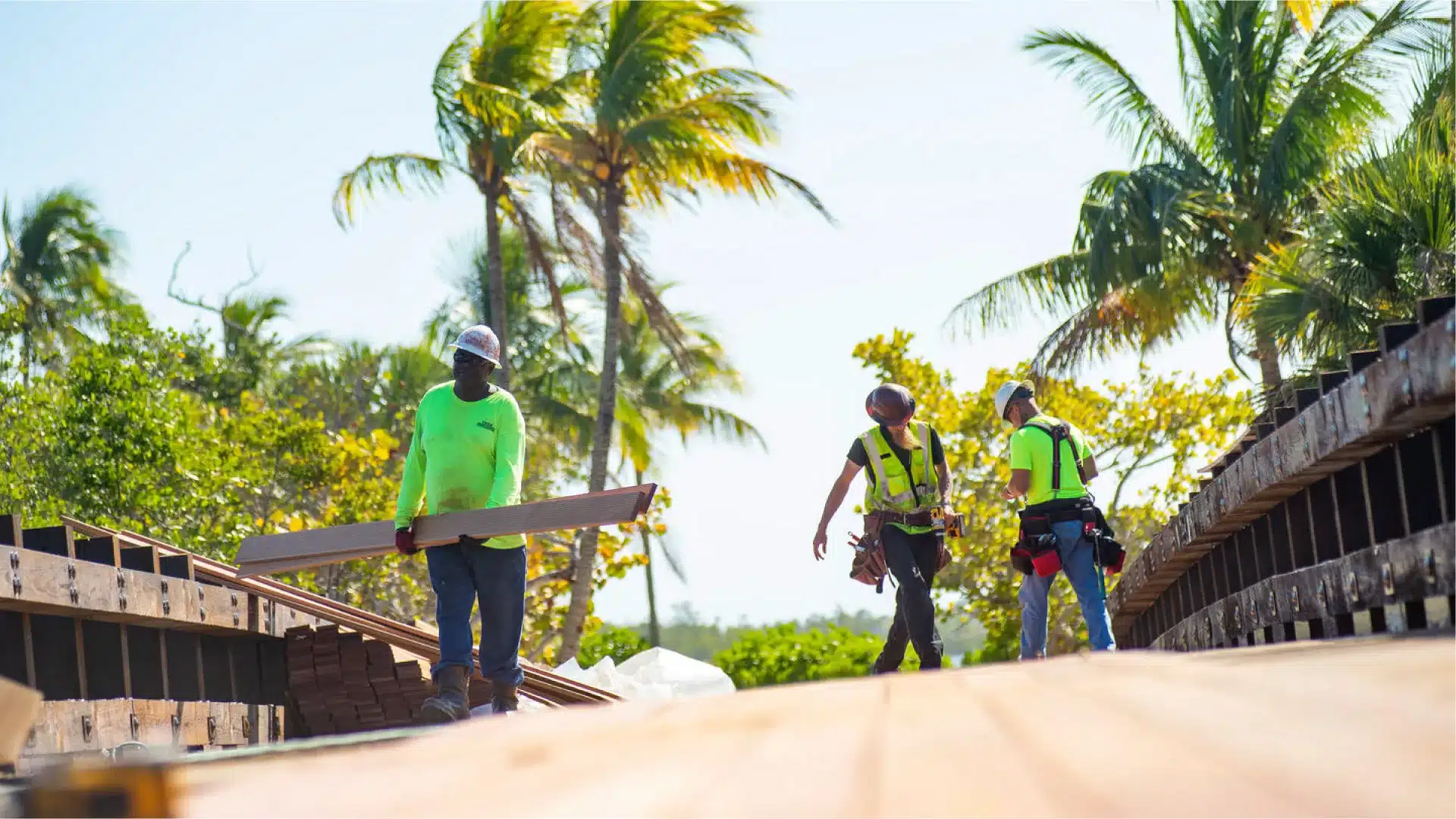
Maintenance & Long-Term Care
Timber pedestrian bridges, while durable, do require some level of maintenance to ensure they remain in excellent condition over time.
Regular Inspections
YBC offers maintenance packages that include regular inspections to identify any potential issues, such as structural wear or environmental damage. Early detection of problems can prevent costly repairs down the line, ensuring the bridge remains safe for use.
Long-Term Care
Timber bridges should be cleaned and re-stained or sealed periodically to protect the wood from the elements. This maintenance not only extends the life of the bridge but also keeps it looking its best. YBC provides guidance on the best care practices and can perform necessary maintenance tasks to keep the bridge in optimal condition.
Why Choose York Bridge Concepts
In summary, York Bridge Concepts offers unmatched expertise in the design and construction of timber pedestrian bridges. With a focus on sustainability, durability, and aesthetic appeal, YBC's bridges are a smart choice for any project. Their attention to detail, combined with modern construction techniques, ensures that every bridge is built to last while enhancing the beauty of the surrounding environment.
YBC's commitment to quality and innovation, paired with their dedication to customer satisfaction, makes them the ideal partner for pedestrian bridge projects of any scale. By choosing YBC, you're not just building a bridge—you're creating a landmark that will stand the test of time.
Frequently Asked Questions (FAQs)
What are the advantages of choosing timber for pedestrian bridges?
Timber bridges offer several benefits, including sustainability, durability, and aesthetic appeal. Timber is a renewable resource, making it an eco-friendly choice. Modern treatments ensure long-term durability, and its natural beauty enhances any landscape.
How long do timber pedestrian bridges last?
When properly treated and maintained, timber pedestrian bridges can last several decades. Regular inspections and maintenance help to extend their lifespan. YBC pedestrian bridges have a 75+ year design lifespan.
What design options are available for timber pedestrian bridges?
Timber bridges can be customized to suit various designs, from simple boardwalks to intricate covered bridges. Features such as curved walkways, hybrid materials, and decorative elements are also possible.
How is the construction process managed?
YBC handles the entire design-build process, including site assessments for the bridge, necessary drawings for permits, construction, and ongoing maintenance.
What maintenance is required for timber bridges?
Timber bridges need periodic cleaning, re-staining, or sealing to protect the wood from weathering. Regular inspections are recommended to identify and address any structural issues early. YBC offers an ongoing maintenance and inspections for your YBC built bridge.
Can timber bridges be used for heavy pedestrian traffic?
Yes, timber bridges are designed to accommodate varying levels of pedestrian traffic. Depending on the design, they can support both light foot traffic and heavier usage in busy public spaces.
Does YBC offer post-construction support?
When properly treated and maintained, timber pedestrian bridges can last several decades. Regular inspections and maintenance help to extend their lifespan. YBC pedestrian bridges have a 75+ year design lifespan.
Create Your Legacy Today
Discover the intersection of strength, durability, and environmental responsibility with York Bridge Concepts. Let's build a bridge to the future together.

